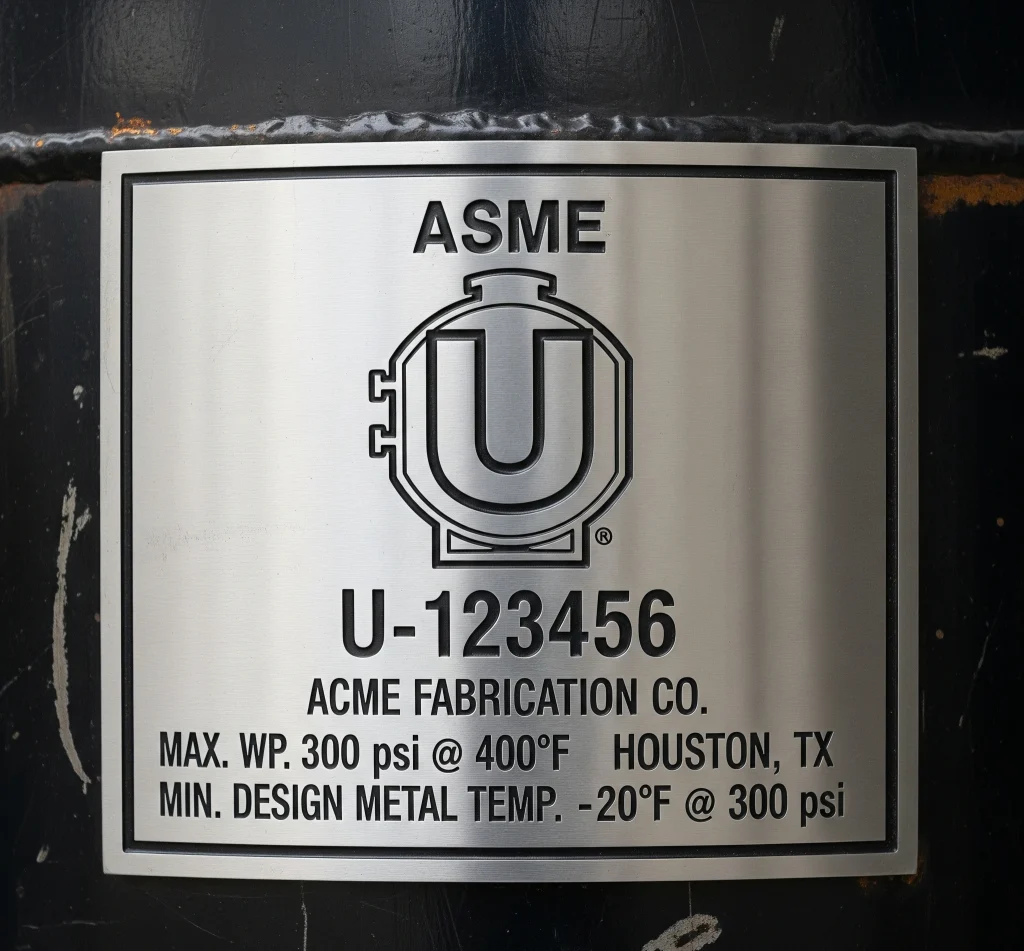
What Are the Different Types of Pressure Vessel Codes for Compliance?
What Are the Different Types of Pressure Vessel Codes? A Complete Guide for Buyers and Engineers
Many industries rely on pressure vessels to store and process gases or liquids under carefully controlled conditions. If you’re researching fabrication or purchase options in the U.S., you’ll come across various ASME pressure vessel code types, pressure vessel inspection codes, and other international standards. Understanding what are the different types of pressure vessel codes is essential for making informed decisions, ensuring safety, and maintaining compliance. This guide breaks down the ASME Boiler and Pressure Vessel Code, key inspection frameworks like API 510 and NBIC, and helps you determine which standards apply to your operations and industry.
Understand pressure vessel code basics
Before you dive into individual code types, it helps to know what a pressure vessel code generally does. These codes set minimum design, fabrication, inspection, and testing standards so that your vessel can withstand internal or external pressure without the risk of a catastrophic failure. Here’s why codes matter:
- They protect personnel, the environment, and property from vessel failures.
- They unify design and fabrication practices so everyone follows the same rulebook.
- They aid inspectors, regulators, and insurance companies in verifying your vessel’s integrity.
Good news, most reputable manufacturers already design and build pressure vessels following these standards. When you hire a company, look for certifications or code stamps that prove compliance. If you’re unsure whether a particular vessel meets code, you can always check with an Authorized Inspector or request the relevant code documentation.
If you’re new to pressure vessels, you might also find it helpful to review what is a pressure vessel. That quick resource covers the basic definition, typical uses, and how vessels differ from standard tanks.
What are the different types of pressure vessel codes?
Pressure vessels serve a wide range of applications, from chemical processing plants to power generation. Accordingly, multiple codes have emerged around the world to reflect differences in local laws, industry norms, and engineering philosophies. Here are the major codes you should know:
- ASME Boiler and Pressure Vessel Code (BPVC)
- API 510 Pressure Vessel Inspection Code
- Additional regional or industry-specific standards (for instance, EN codes in Europe)
If you plan to manufacture in the United States or sell vessels into the US market, the ASME Boiler and Pressure Vessel Code is the de facto standard. Globally, it’s also respected in many other countries. Meanwhile, API 510 focuses more on in-service inspection rather than initial design and fabrication, but it remains an essential reference for owners and inspectors.
You can also explore pressure vessel codes for an overview of how these regulations shape design and construction practices. And if you’re curious about different vessel designs, check out what are the different types of pressure vessels.
Evaluate major ASME sections
Since the ASME code is the most recognized in North America, it’s worth going deeper into its framework. The ASME Boiler and Pressure Vessel Code (BPVC) is split into multiple sections that address materials, design rules, nondestructive testing, nuclear components, and more. Each section receives updates every two years, reflecting new materials, manufacturing methods, and technical advances.
Here are the most relevant parts for typical pressure vessels:
ASME BPVC Section II: Materials
Section II comes in four parts:
- Part A: Ferrous material specifications (SA).
- Part B: Nonferrous material specifications (SB).
- Part C: Specifications for welding rods, electrodes, and filler metals (SFA).
- Part D: Properties (Customary/Metric), providing stress values and material properties.
When selecting pressure vessel materials, you’ll reference these specifications to ensure you pick metals that can handle the intended pressures and temperature cycles. For a deeper dive into materials, visit what materials are used in pressure vessels.
ASME BPVC Section V: Nondestructive Examination
Section V prescribes requirements for nondestructive testing (NDT) methods like radiography, ultrasonic, magnetic particle, and liquid penetrant. It outlines:
- How to qualify NDT personnel.
- The responsibilities of suppliers and authorized inspectors.
- Procedures for ensuring that a vessel is sound with no hidden flaws.
Because safety is paramount, nondestructive examinations confirm weld quality, detect cracks, and keep your vessel operating reliably.
ASME BPVC Section VIII: Rules for Construction of Pressure Vessels
ASME Section VIII governs pressure vessels in three divisions: Division 1 (above 15 psi, “U stamp”) is most common; Division 2 (to 10,000 psi, “U2 stamp”) uses detailed analysis; Division 3 covers ultra-high pressures. Choose based on your system’s complexity and pressure needs.
ASME BPVC Section IX: Welding, Brazing, and Fusing Qualifications
Although not highlighted in every project, Section IX matters whenever a vessel requires welding. It describes the procedures and qualifications that welders must follow, ensuring that the welded joints maintain the necessary strength and integrity under pressure.
Examine other recognized codes
Although ASME dominates pressure vessel regulations in the USA, you may encounter other codes or standards depending on your use case:
API 510 Pressure Vessel Inspection Code
API 510, published by the American Petroleum Institute, focuses on the in-service inspection, rating, repair, and alteration of pressure vessels. It serves as a companion to ASME code by ensuring vessels maintain integrity during operation. If you run a facility that processes oil, gas, or chemicals, you might need to comply with both ASME and API 510 to cover the entire lifecycle of your vessels.
The National Board Inspection Code (NBIC)
The NBIC provides guidelines for installation, inspection, and repairs of boilers and pressure vessels. Like API 510, the NBIC deals heavily with in-service aspects, ensuring that once a vessel is in use, it stays safe through routine checks. Authorized Inspectors typically reference NBIC if you plan to repair or modify your vessel after it’s been commissioned.
European (EN) and Other International Standards
Outside the US, regional standards may apply. For instance, the European Pressure Equipment Directive (PED) sets requirements for vessels within the EU. If you plan to operate or export vessels internationally, you’ll want to confirm compliance with your target country’s regulations. In many cases, an ASME-approved vessel may also satisfy foreign markets, although certain modifications or additional markings could be required.
Industry-Specific Codes
Finally, some industries impose their own internal guidelines to address unique processes. Pharmaceutical companies, for example, sometimes add sterilization or surface-finish requirements beyond the ASME standard. If your industry has specialized needs, speak with your manufacturer about blending multiple codes or best practices to get exactly what you need.
What are the different types of pressure vessel codes
When asking “what are the different types of pressure vessel codes,” it’s clear that safety drives them all. In the U.S., ASME leads the way, with API 510 covering inspections and NBIC overseeing repairs. Globally, some regions follow local codes but often accept ASME standards. To ensure compliance, identify the code suited to your pressure range and environment, then work with a certified manufacturer holding U or U2 stamps. This guarantees your vessel can handle stress, inspections, and future upgrades. Whether it’s Division 1 or a high-pressure build, code certification is your first step toward safety and reliability.
Need a reliable partner?
Red River specializes in the design and manufacturing of pressure vessels. We also fabricate related items such as prefabricated spools and skid packages.
Reach out to us today and experience the Red River difference. Where American-made products and American Values come together, we care more.
Frequently asked questions
1. What are pressure vessel codes?
Pressure vessel codes are official safety standards that govern the design, construction, inspection, and maintenance of pressure vessels—containers that hold gases or liquids under pressure. These codes ensure that vessels can safely handle high-pressure environments without risk of rupture, leaks, or explosions.
2. What is the ASME pressure vessel code?
The ASME pressure vessel code refers to ASME Boiler and Pressure Vessel Code (BPVC) Section VIII, developed by the American Society of Mechanical Engineers. It’s the most widely used standard globally for building pressure vessels. It outlines rules for design, materials, fabrication, testing, and certification, ensuring that vessels meet strict safety and reliability requirements.
3. What are the different types of pressure vessel codes?
Several organizations issue pressure vessel codes, each tailored to specific industries or regions. Common types include:
- ASME BPVC (USA & international) – Covers most industrial applications.
- PED (Pressure Equipment Directive, EU) – Required for vessels used in the European Union.
- CSA B51 (Canada) – Canadian code governing pressure equipment.
- AD 2000 (Germany) – German-based safety code for pressure vessels.
- ISO 11120 – For gas cylinders and transportable pressure vessels globally.
Each code has unique requirements, but all share one goal: prevent pressure-related failures through strict design and testing standards.
- Can I reuse an older vessel that was built to a prior code edition?
Yes, if it was code compliant at the time of fabrication, maintained properly, and passes current inspection standards. You should also confirm whether your jurisdiction requires an upgrade to match newer code supplements.
- What is the difference between a pressure vessel and a tank?
Generally, a tank is designed for atmospheric or low-pressure storage, while a pressure vessel must handle higher internal or external pressures. You can explore more nuances at what is the difference between a pressure vessel and a tank.
Key takeaways
- A pressure vessel code establishes design, fabrication, inspection, and testing requirements so vessels remain safe over time.
- ASME BPVC is the gold standard in the US, offering divisions for various pressure levels.
- API 510, NBIC, and other codes focus on different stages of a vessel’s life, like inspection or repair.
- Code stamps (e.g., U, U2) validate that a vessel meets specific sections of the ASME code.
